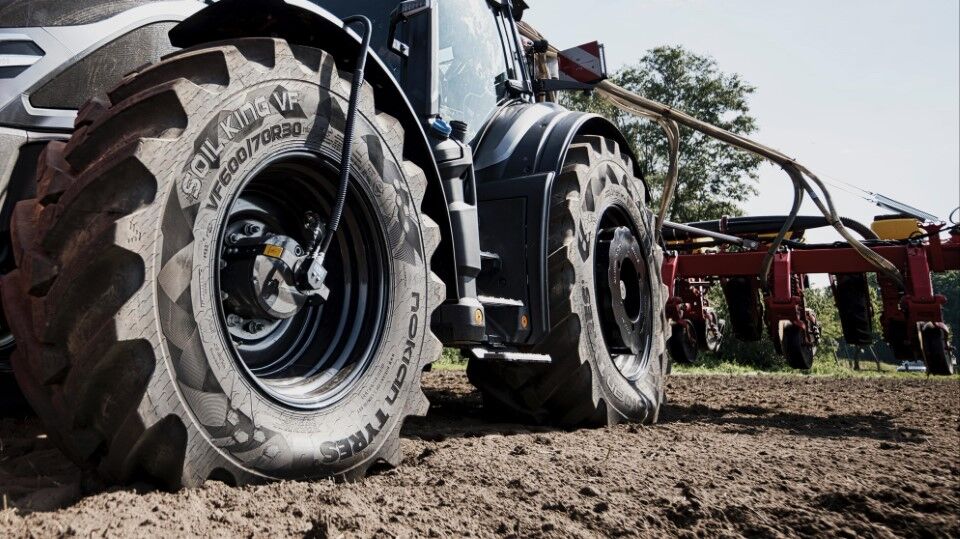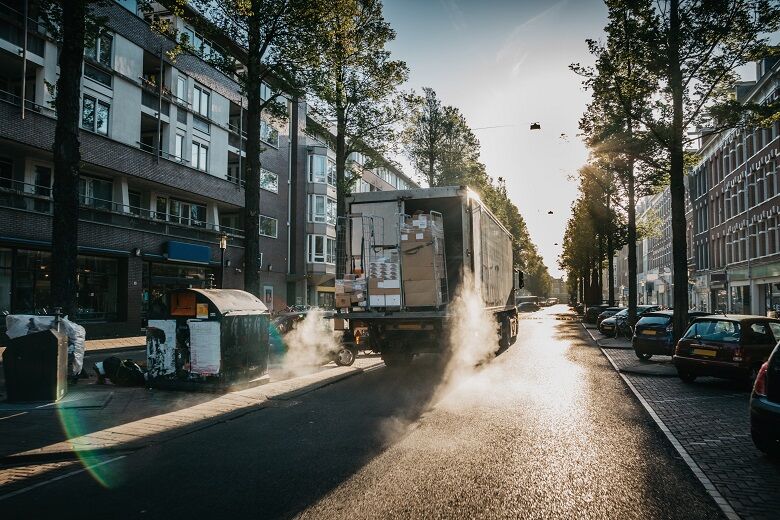
First-class tyres deserve first-class mounting. The installation work should be carried out according to instructions and safety measures to prevent any risk of injury or damage. Paying special attention to the mounting process pays off with a long, trouble-free service life for the tires and a safe working environment
First-class tyres deserve first-class mounting. The installation work should be carried out according to instructions and safety measures to prevent any risk of injury or damage. Paying special attention to the mounting process pays off with a long, trouble-free service life for the tires and a safe working environment
Mounting tires on four-wheel drive tractors
Mounting a four-wheel-drive tractor must be done with great care to ensure the best driving results and maintain the tires’ service life. Generally, the actual rolling circumference (R.C.) of a front tire should be 1 – 3 % (lug pattern max 4%) higher than the rolling circumference calculated using the gear ratio. Excessive positive lead in the front tires can cause quick wear and reduce mileage, while insufficient lead in the front tires makes steering the tractor more difficult.
Check the Technical tire manual for the tractor in question for detailed instructions on calculating the rolling circumferences (gear ratio). When changing the tire size or type, always check the relationship between rolling circumferences and make sure that the combination is within the manufacturer’s recommended limits.
Download Technical tire manual
Example of calculating the rolling circumference
The basis for the calculation is the gear ratio between the front and rear axle. Use it to calculate the required front tire’s rolling circumference.
Mounting tires safely
Mounting tires requires the right equipment and specialized knowledge to avoid damage or injury. Furthermore, appropriate tire mounting and inflation pressures ensure that the tire operates at the optimal level.
Always use proper mounting tools and check that the mounting equipment is in good condition. The mounting machine should have adequate power and be able to perform the required movements. When handling the rim, do not roll it around; lift it to the mounting machine with special care. When handling the tire, make sure not to lift it from the bead area.
- Inspect the rim: Before mounting, inspect the rim and ensure it is compatible with the tire. Discard the rim if you find any cracks or other damage. Make sure that the rim diameter matches that of the tire. The permitted variation in rim circumference is ± 1,2mm, regardless of the rim size.
- Inspect the tire: Check the tire for any signs of damage, both on the inside and outside. If the tire is damaged, it is not suitable for mounting. The tire sidewall has a marking that indicates the maximum bead seating pressure—adhere to this maximum pressure and do not exceed it. Use the same inflation pressure specified by the tire manufacturer.
In addition to checking the tire condition, ensure that the tire is no older than ten years, even if unused. Tires that are over ten years old should not be mounted.
Safety precautions during tire mounting
Because tire mounting is a specialized operation that requires the right equipment and knowledge, you must be mindful of what you are doing and follow safety measures at all stages.
Always use personal protection, including safety goggles, ear protection, safety shoes and protective clothing. Wear a face mask when applying talcum powder to the tube.
- Lubricate the tire beads and rim flanges with an approved lubricant.
- Maintain a safe distance from the tire, and do not sit or lean on it during inflation.
- Never stand in front of the sidewall. Instead, always fill the tyre standing on the tire tread side.
- Use a long enough filling hose that allows you to stand at a safe distance.
- Ensure the tire is attached to the mounting machine during inflation.
- Make sure the tyre sits properly on the rim flanges, and never leave the wheel to inflate unattended.
- Ensure no bystanders are present who do not participate in the tire mounting.
- Deflate the tire if you notice anything alarming or out of the ordinary.
Safe tire pressurization
Although the entire tire mounting operation calls for strict safety measures, pressurizing the tire is the most critical stage and the most dangerous work in tire industry. To avoid damage to the tire, equipment and people, ensure that all safety precautions are followed.
The pressure gauge must work properly and give the right value. When in doubt, have the pressure gauge calibrated. Always adhere to the maximum bead seating pressure indicated in the tire sidewall. Exceeding the maximum pressure can explode the tire, leading to material damage and injury. Consult the tire manufacturer if you are unsure or cannot find the recommended maximum pressure.
Even with all the other safety measures being followed, use a safety cage when filling the tire. Although the safety cage stops the parts of an exploding tire from causing damage, it does not reduce the explosion pressure wave. Always wear ear protection while pressurizing the tire. Another way to control the maximum inflation pressure and avoid exceeding it is by using an automatic air-filling device.
Please remember that it is the driver’s responsibility to ensure their tires are safe and suitable for their vehicle and to follow the vehicle’s manufacturer´s guidelines for proper use and maintenance. Consult your closest Nokian Tyres dealer or your vehicle’s manufacturer for specific advice.


